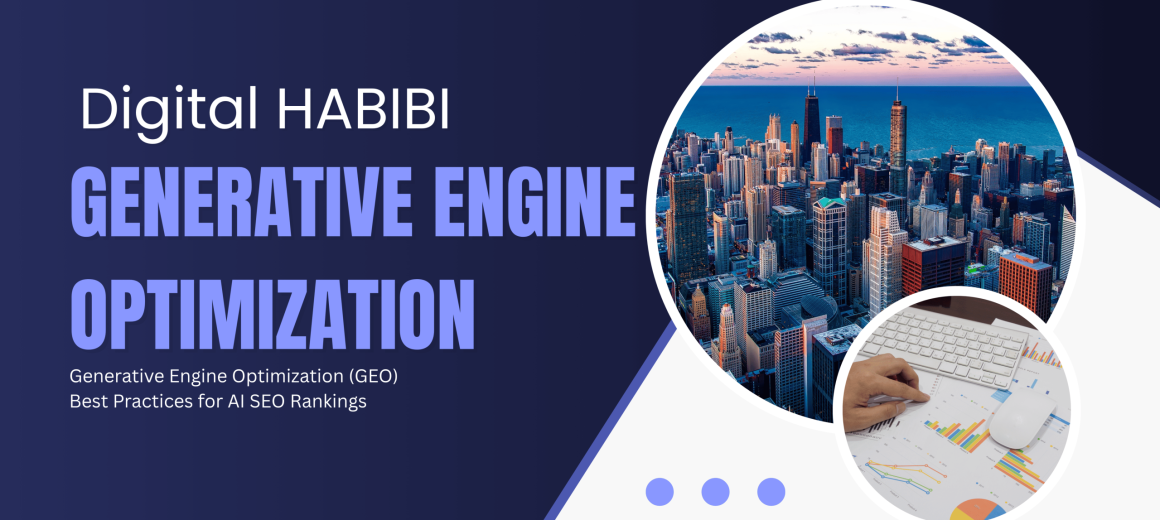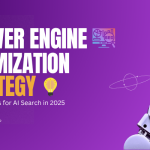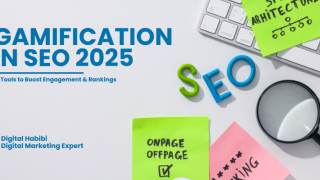Search is no longer just a way to sort pages. In 2025, there have been big changes in how people use knowledge. When a person uses Google’s Search Generative Experience (SGE), Microsoft Copilot, or a conversational tool like ChatGPT, the trip often starts and ends with an AI-made summary. This means that fewer people are clicking on websites, but the need to be seen is still very important.
Generative Engine Optimization (GEO) is a field that makes sure your content is not only findable but also citeable, quoteable, and included in AI-driven replies. In standard SEO, the goal is to show up high in SERPs. With GEO, the goal is to show up high in AI searches.
This blog posts compares GEO, AEO, and SEO, looks at content trends that get AI citations, explains technical and GEO best practices, and gives a measurement framework that PR professionals, SEO managers, and content operations teams can use right away.
GEO vs AEO vs SEO: The Evolution of Search Optimization
To figure out where GEO fits in, you need to look at the whole field of search Optimization.
- Search Engine Optimization (SEO): Conventional SEO uses backlinks, keywords, metadata, and human interaction to rank web pages. Organic traffic from hits is the main KPI.
- Answer Engine Optimization (AEO): AEO focusses on how to get straight replies, which is important as AI-driven search grows. The goal is not to get hits, but to get selected snippets, People Also Ask (PAA) replies and AI summaries.
- Generative Engine Optimization (GEO): This is the next step. It makes sure that your material is well-organised, full of facts, and full of context, so AI systems can read it and use it directly in their generative replies. Number of AI citations or mentions, not just hits, is the KPI.
How do AI engines know what content to cite?
Artificial intelligence does not just show any material, they like sources that are reliable, well-organised and simple to cite. For material to be successful on GEO, it needs to meet certain criteria.
- Credibility and authority: AI likes to use well-known sources that have a lot of influence on the subject. To do this, you need to build E-E-A-T signals, which stand for Experience, Expertise, Authoritativeness and Trustworthiness. You can do this by using expert writing, references and strong subject authority.
- Structured clarity: Questions and answers, step-by-step guides, and lists are all examples of content that is more likely to be mentioned because they are easy to read and understand. There should be no doubts for AI.
- Definitions that are short but complete: Engines often look for definitions that are short and exact. Generative Engine Optimization (GEO) is the process of organising material so that it can be mentioned, and included in search results produced by AI. This kind of definition works well for AI summaries.
- Newness and updates: AI models give more weight to recent useful info. Statistics or plans that are too old to be useful are rarely chosen. Regularly updating your content makes it more likely that AI will include it in replies.
If you’re looking for SEO in UAE, Arabic SEO content or Local SEO Dubai, localised insights and international assets will help you show up in AI-driven regional searches.
Content Patterns That Make AI Summaries Work
Before picking what to show in answers, AI-driven computers look at structure and clarity. The following types of material work especially well:
- Question-and-Answer Style: Your content will be easier for AI to find and share if you write it in the form of natural language questions followed by short, authoritative answers. You could ask, “What are the best SEO strategies for online casino SEO in 2025?” and then give a two-sentence answer.
- Short explanations and definitions: AI can understand a short text (30–50 words) that explains an idea. For example, Answer Engine Optimization is the process of setting up content in a way that makes it simple for SGE and Copilot, which are AI-powered search engines to find in their straight replies.
- Frameworks with steps and numbers: AI can understand what to do better when the lists are in the right order. Like “5 Steps to Improve Your Sports Betting SEO,” the title of the article shows that it is well-organised. An easy to read text should be added to each step to describe it. AI can then pick whether to show just a few steps or the whole list.
- Tables and Comparative Views: AI can easily identify relationships when comparisons are structured. You can find ready-made summaries of Traditional SEO, AEO, and GEO in a table. Every row turns into a possible snippet.
- Multiple languages and localised content: Adding Arabic SEO content for SEO in UAE makes sure that people see the site where it belongs. Answers that are specific to a language or society are given more weight by AI systems.
How to Structure and Markup Your Site for GEO Success
Structure, code, and clarity are very important for AI-driven machines. Citation chances go up with a strong technical base.
- Integration of schema markup: Adding schema (FAQ, HowTo, Review, and Organisation) helps AI systems understand what is going on. For instance, code for games, betting odds and reviews should all be part of iGaming SEO material.
- Entity-first architecture: It’s easier for AI to connect your site to knowledge graphs if you build your content around entities (like people, places, brands and ideas) instead of just keywords.
- Data tables and structured assets: Putting structured data into tables, charts and graphs makes the information machine-readable so AI can use it to find answers.
- Topic clusters and content hubs: Instead of having blogs all over the place, put groups of blogs that are linked together on a central page. In the case of sports betting an SEO hub with links to subpages on UX, compliance and chances improvement will make the subject seem more trustworthy.
AEO vs. GEO: What the Future Holds
Answer Engine Optimization (AEO) and Generative Engine Optimization (GEO) are becoming less different as the year 2025 goes on. Both fields grew out of the same change in search: the move from keyword-based SERPs to AI-driven, answer-first experiences. However, they each have their own specific roles in this new world. SEO managers, public relations teams, and content planners who want to make sure their exposure in the future will need to know how these things come together.
Getting into the answer space is AEO’s main job:
AEO is mostly about making information useful and easy to find in AI-driven recaps. It takes a lot of ideas from organised content forms, FAQs, and highlighted bits. The goal is simple: make sure that your content is chosen as the direct answer to a user’s question. One example is in the SEO for sports betting or online casinos, a well-structured FAQ like “Is it legal to bet on sports in Dubai?” can be lifted straight into an SGE or Copilot answer.
Building long-term trust in AI systems is GEO’s main job:
GEO, on the other hand, looks at the structure and bigger picture. Not only do you want to be picked for one answer, but you also want to be known as a reliable source across a range of AI results. GEO puts a lot of weight on entity-driven content, schema-rich site design, multilingual coverage (like SEO content in Arabic), and trust signs that match AI training data. AEO is like a sprint to get the answers you need right now, and GEO is like a run to build the AI power of tomorrow.
Why They Will Come Together:
Over the next few years, systems that are run by AI will combine answer generation and content reference more and more. The Google SGE engine already combines snippets with natural answers, and the ChatGPT and Copilot add-ons get their information from organised datasets. This means that GEO strategies (like entity-first hubs, international assets, and data markup) and AEO strategies (like Q&A style) will no longer be separate. Instead, they will work together.
The change will affect teams and workflows:
For SEO and content teams, this means that “SEO specialists” will become cross-functional GEO-AEO planners instead of “PR specialists.” Short-form assets that are good for snippets will need to be balanced with long-form, reliable hub pages in editorial processes. There will be more than just backlinks that PR will try to get. They will also try to get AI comments and training data exposure. Growth marketers won’t just look at traffic; they’ll also look at the number of AI citations, the appearance of the brand in generative summaries, and the number of conversions that were helped by AI-powered finding.
Sectors That Will Experience It First:
Niche markets with a lot of rules and a lot of competition, like iGaming SEO, online gambling SEO, sports betting SEO and SEO in UAE, will see this merger happen first. Why? Because AI systems in these fields value material that is reliable, follows the rules, and is tailored to the local market. AEO might get you the main answer, but GEO makes sure that your brand is always seen as the expert in a number of AI-made stories.
What You Should Know About Strategy:
You won’t have to choose between AEO and GEO in the future. Instead, the best move is to use both strategies at the same time. Build GEO to keep AI authoritative over the long term and use AEO to get instant answer places. As AI search changes the way people find things online, these two Optimization frameworks keep your business current, visible, and trusted.
Conclusion
Generative Engine Optimization (GEO) is not just a new term; it’s how SEO naturally changes in a world where AI is the main technology. Brands can make sure they stay noticeable and trusted even as AI search cuts down on traditional click chances by focussing on content patterns that can be cited, technical clarity, and operational processes.
The people who optimise for answers instead of just results will be successful in the future of search. GEO makes sure that your brand is talked about in AI.
Download our Data Hub Page Template to get started on creating GEO-ready content hubs immediately.






